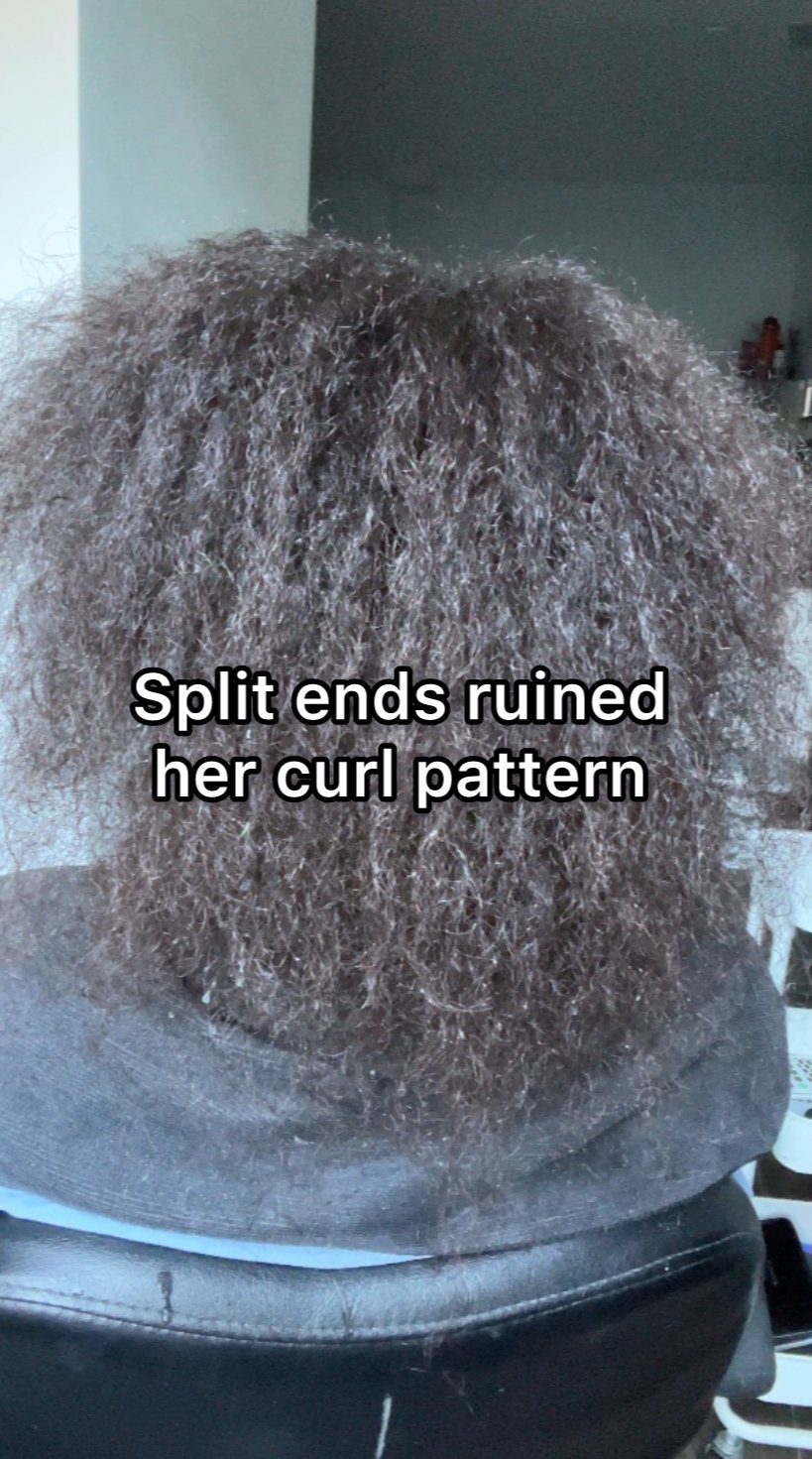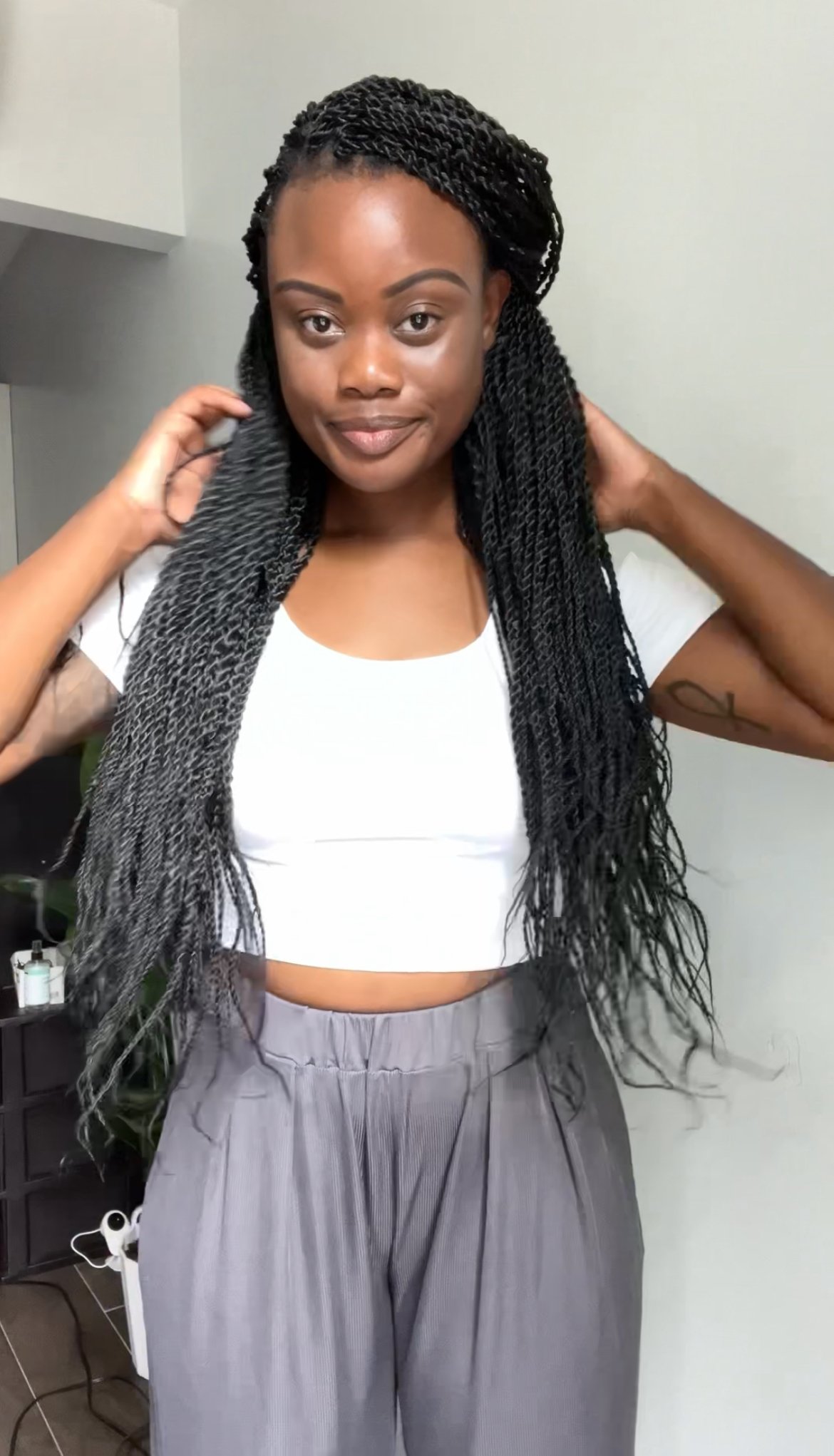Stop Split Ends in Their Tracks
How To Prevent Split Ends
*This post contains affiliate links*
Split ends are one of the major hair problems that many people face. Split ends occur when the protective outer layer of your hair (cuticle) gets damaged, resulting in frayed or split hair strands. Common causes of split ends include excessive heat styling, chemical treatments, harsh weather conditions, and lack of proper hair care.
Having split ends not only makes your hair look dull and unhealthy but can also lead to further breakage and damage to your locks. However, with proper hair care and preventative measures, you can prevent split ends and promote healthy-looking hair.
In this guide, we will discuss some simple yet effective tips on how to prevent split ends and maintain beautiful and lustrous locks.
What are Split Ends?
Split ends are the result of damaged hair shafts. The hair cuticle, which is the outermost layer of each hair strand, acts as a protective barrier for the inner layers. However, when this layer gets damaged or wears away due to various factors, the inner layers become exposed and vulnerable.
As a result, split ends occur where these exposed inner layers split into two or more strands. This causes your hair to look frizzy and rough, giving it an overall unhealthy appearance.
There are different types of split ends depending on their severity. Some common types include single split end, forked split end, and tree split end.
Having a few split ends may not seem like a big deal at first, but if left untreated, they can lead to further damage and breakage of your hair. Therefore, it is essential to identify and address split ends before they worsen.
What Causes Split Ends?
There are various causes of split ends, and understanding them can help you take preventative measures to avoid them. Some common causes include:
Heat styling: Excessive use of hot tools like blow dryers, flat irons, and curling irons can damage your hair cuticle and cause split ends. Also, using these tools on high heat settings can further worsen the situation.
Chemical treatments: Chemical treatments like hair coloring, bleaching, and perming can strip your hair of its natural oils and moisture, making it prone to split ends.
Harsh weather conditions: Exposure to strong winds, dry air, or extreme humidity can cause your hair to become dry and brittle, leading to split ends.
Lack of proper hair care: Not following a regular hair care routine that includes washing, conditioning, and moisturizing can make your hair weak and prone to damage.
Over-brushing or combing: Roughly brushing or combing through wet hair can cause tangles and breakage, leading to split ends.
Poor nutrition: Lack of essential nutrients like protein, vitamins, and minerals in your diet can affect the health of your hair and cause split ends.
How Do Split Ends Affect Curly Hair?
Curly hair is more prone to split ends because of its natural structure. The bends and curves in curly hair make it difficult for the natural oils produced by the scalp to reach the ends, leaving them dry and vulnerable.
Moreover, curly hair tends to be drier than straight hair due to its shape, making it more susceptible to damage and breakage.
Split ends also affect curls differently compared to straight hair. While on straight hair, split ends can be easily trimmed off, on curly hair, they tend to travel up the hair shaft, causing further damage and breakage along the way. This can result in uneven and frizzy curls that are difficult to manage.
Furthermore, split ends can also affect the overall shape and definition of your curls, making them look limp and lifeless. This is because split ends disrupt the natural pattern of curls, causing them to lose their bounce and texture.
Therefore, it is crucial for those with curly hair to take extra care in preventing split ends to maintain healthy and well-defined curls.
How to Get Rid of Split Ends
The only way to completely get rid of split ends is by trimming them off. However, there are some ways to temporarily mend split ends and prevent further damage.
Regular trims: The most effective way to get rid of split ends is by scheduling a regular trim every 8-12 weeks. This will help remove the damaged ends and promote healthy hair growth.
Deep conditioning treatments: Using deep conditioning treatments regularly can help nourish and strengthen your hair, making it less prone to splitting.
Avoid heat styling: Limiting or avoiding the use of hot tools on your hair can prevent further damage and breakage.
Protective hairstyles: Braiding or twisting your hair can help protect it from external factors that can cause split ends.
Use products with natural ingredients: Look for hair care products that are free of harsh chemicals and contain natural oils and nutrients to promote healthy hair.
What Happens if Split Ends Aren't Treated
If left untreated, split ends can lead to further damage and breakage of your hair. As the split ends continue to travel up the hair shaft, they weaken and thin out the hair strands, making them more prone to breaking off.
Moreover, as split ends become worse, they can also cause frizziness and a rough texture in your hair. This makes it difficult for you to style your hair and can affect your overall appearance.
Furthermore, untreated split ends can also hinder hair growth. As the damaged hair continues to break off, it may take longer for new healthy hair to grow, resulting in thinner and less voluminous locks.
In extreme cases, untreated split ends can lead to hair loss and bald patches, especially if they are accompanied by other hair conditions like scalp infections or hormonal imbalances.
How to Prevent Split Ends
Now You know all about the causes and effects of split ends, let's discuss some preventive measures to keep them at bay:
Limit heat styling
Limiting heat styling is essential for preventing split ends and maintaining the overall health of your hair. High temperatures from tools like flat irons, curling wands, and blow dryers can strip your hair of moisture, leading to dryness and fragility.
To minimize damage, consider embracing air drying whenever possible, or use heat tools on the lowest effective setting. Additionally, incorporating a heat protectant spray before applying any heat can serve as a barrier, reducing the risk of harm.
Opting for heat-free styling methods, such as braiding or using curlers, can also help in creating beautiful styles without compromising hair integrity. Remember, less heat means healthier hair!
Minimize chemical treatments
Chemical treatments like bleach, hair dyes, and relaxers can weaken the hair strands and lead to split ends. Overexposure to these harsh chemicals can also cause dryness, breakage, and overall damage to your hair.
To prevent split ends from chemical treatments, it is essential to limit their use or opt for natural alternatives. If you must use them, make sure to deep condition your hair regularly and follow up with a trim to remove any damaged ends.
Follow a regular hair care routine
Establishing a regular hair care routine is crucial for maintaining healthy and split end-free curls. This includes washing your hair with a gentle shampoo, conditioning regularly, and using leave-in treatments to keep your hair moisturized and nourished.
Additionally, incorporating scalp massages into your routine can promote blood circulation and stimulate hair growth. Don't forget to also schedule regular trims every 8-12 weeks to remove any split ends before they cause further damage.
Use a wide-toothed comb
Using the right tools on curly hair is essential for preventing split ends. A wide-toothed comb is ideal for detangling wet or dry curls without causing breakage or pulling on the hair. Avoid using brushes or fine-toothed combs, as they can cause damage and lead to split ends.
When combing your hair, start from the bottom and work your way up to avoid tugging on any knots or tangles. Be gentle and take your time to prevent causing any damage.
Avoid rough towel-drying
Towel-drying your hair roughly can also contribute to split ends by causing friction and breakage. Instead of rubbing your hair vigorously with a towel, gently squeeze out excess water and then wrap it in a soft cotton t-shirt or microfiber towel.
These materials are more gentle on curly hair and will help absorb moisture without causing damage. You can also use a wide-toothed comb or your fingers to detangle and distribute any leave-in products evenly throughout your hair.
Deep condition regularly
Deep conditioning treatments are essential for keeping curly hair nourished, moisturized, and strong. Regularly incorporating deep conditioners into your hair care routine can prevent split ends by providing nutrients and strengthening the hair fibers.
Apply the deep conditioner to damp hair, focusing on the ends, and leave it on for at least 30 minutes before rinsing out thoroughly.
Protect hair from harsh weather conditions
Exposure to harsh weather conditions like extreme heat, cold, wind, and humidity can also contribute to split ends. To prevent this, consider wearing a hat or scarf when going out in the sun to protect your hair from UV rays.
In colder months, use protective styles like braids or twists to shield your hair from dryness and breakage caused by cold air. Additionally, always make sure to moisturize your hair regularly and deep condition weekly to combat any potential damage from weather conditions.
The Best Hairstyles for Preventing Split Ends
In addition to proper hair care and using the right products, choosing suitable hairstyles can also help prevent split ends. Avoid tight hairstyles that put strain on your hair, such as tight ponytails or braids, as they can cause breakage and lead to split ends.
Opt for looser styles like buns or loose braids instead. These will still keep your hair out of your face but without putting too much pressure on the strands.
Additionally, incorporating protective styles into your routine, such as twists or braids, can also help prevent split ends by minimizing manipulation and protecting the ends of your hair from damage.
Lastly, make sure to change up your hairstyles frequently to avoid putting constant strain on the same areas of your hair. This will also prevent split ends from forming in specific spots.
Conclusion
In conclusion, split ends are a common issue among curly-haired individuals. However, with proper hair care practices and incorporating preventative measures into your routine, you can minimize their occurrence and maintain healthy curls.
Remember to deep condition regularly, protect your hair from harsh weather conditions, use suitable products and hairstyles, and schedule regular trims for optimal hair health.
With love and care, you can have beautiful, split-end-free curls! So keep loving those luscious locks! Keep shining!













